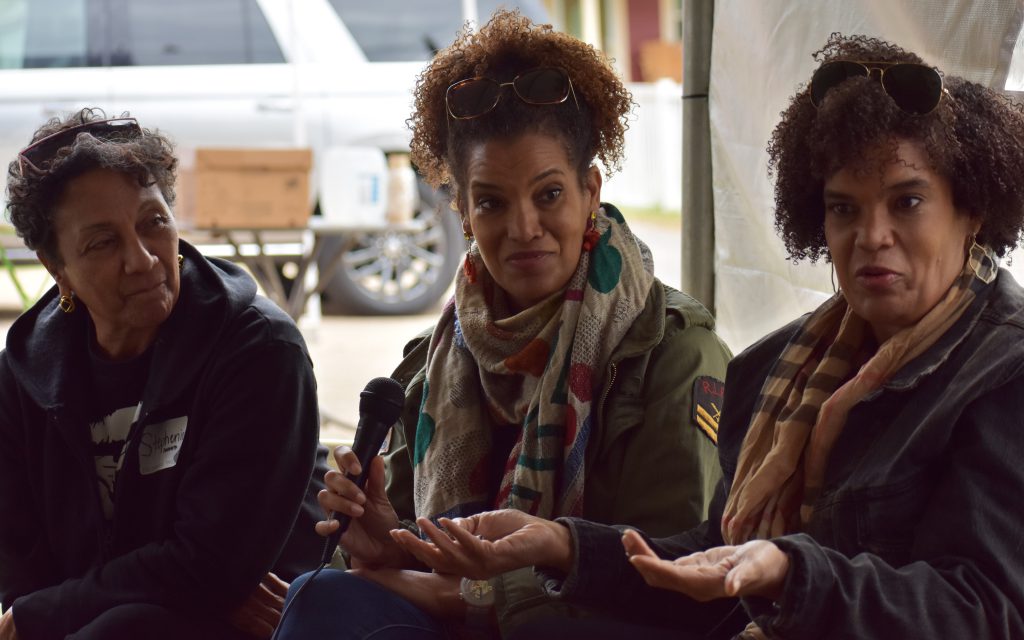
Living in the ‘Sacrifice Zone’
Along one section of the Mississippi River, three massive fertilizer plants contribute to industrial pollution in Louisiana communities
By Sofi Zeman
St. James Parish, La. — From the crest of Louisiana’s Sunshine Bridge, the expanse of modern industry is laid out along the banks of the Mississippi River.
Leviathan petrochemical plants sporting the names of industry giants loom over fields of sugarcane and livestock. Bright yellow hills of sulfur are visible in the distance.
It’s difficult to tell where the fumes stop and the clouds begin. And for generations, exposure to chemical pollutants has been a fact of life for residents in Louisiana’s industrial corridor.
The 85-mile stretch along the Mississippi River between Baton Rouge and New Orleans is home to about 150 chemical production sites. Elevated cancer rates have been documented among residents living in the corridor, earning it the nickname “Cancer Alley.”
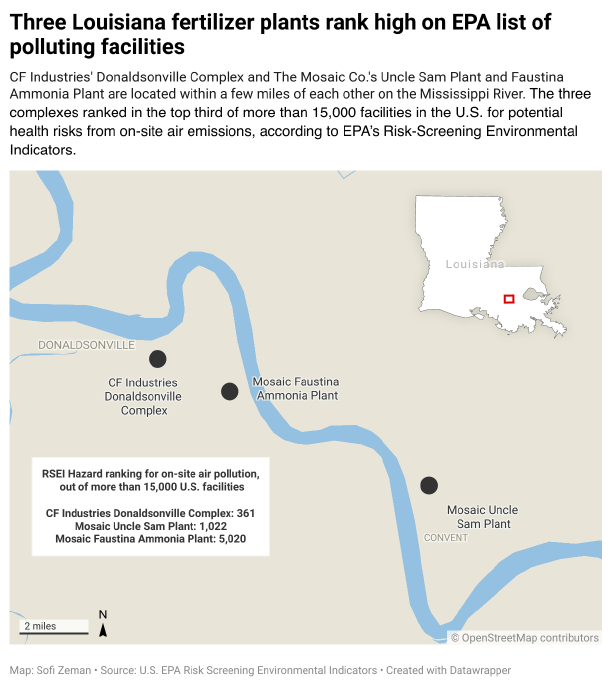
One short section of the river that weaves through St. James and Ascension parishes is home to three massive fertilizer plants belonging to two industry giants. The Mosaic Co.’s Uncle Sam and Faustina plants sit on opposite sides of the Mississippi River in St. James Parish. Just upriver is CF Industries’ Donaldsonville Complex, the largest nitrogen fertilizer plant in North America.
Health and safety concerns around these three fertilizer plants are a microcosm of larger environmental justice issues that are gaining more attention in President Joe Biden’s administration. Residents near the plants live with the risk of industrial incidents, accidents and the greater air pollution burden borne by residents of the region.
“There are just as many (people living) on the fence lines of fertilizer facilities as there are on the fence lines of the other industrial facilities on Cancer Alley,” said Wilma Subra, a longtime environmental scientist and an expert on life in the industrial corridor.
‘This huge immediate concern’
In this part of the country, if you mention the fertilizer industry, people inevitably bring up a notorious incident involving Mosaic’s Uncle Sam phosphogypsum stack.
In late 2018 and early 2019, a sugar cane farmer harvesting a field noticed a strange bulge in the land adjacent to the Uncle Sam Phosphogypsum Stack 4. The 300-acre, 200-foot-tall mountain of gypsum waste contains acidic and radioactive materials.
The farmer reported the bulge to Mosaic, which informed environmental authorities, who eventually determined that the pile was slouching.
Residents were alarmed. “If that gypsum pond had burst, all of that sulfuric acid would have gone into what they call the parish canal and taken it to Blind River. That’s what they were worried about,” said Gail LeBoeuf, a St. James Parish resident and co-founder of Inclusive Louisiana, a nonprofit that aims to protect residents from industrial pollution.
Kimberly Terrell, director of community engagement and a staff scientist at the Tulane Environmental Law Clinic, said the stack posed a threat to drinking water supplies in the area.
“There was this huge immediate concern, because you have a massive amount of liquid toxic waste close to communities, close to the Mississippi River, which is where a lot of places get their drinking water, including New Orleans downstream,” Terrell said.
LeBoeuf said that she first heard rumors of the stack slouching four years earlier.
“I heard in 2015 that it was (leaking),” LeBoeuf said. She believes it was reported only when it couldn’t be kept secret anymore. “And it was nonstop dump trucks, hauling dirt to pack it up,” she said.
At one point, Mosaic proposed dispersing pooled water from the top of the stack using spray evaporators. Residents protested and company officials ultimately withdrew the plan.
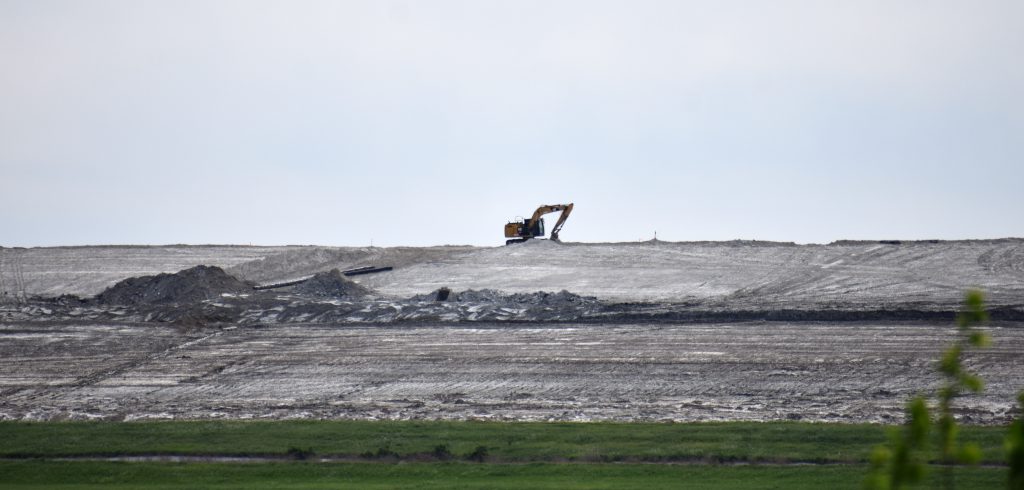
Mosaic later removed some water from the stack and used a dam and berm to slow down the slope’s movement, Mosaic spokesperson Jackie Barron said in an email. Operations have been moved to a different phosphogypsum stack on site.
Mosaic also injected liquid into underground wells, according to a news report from The Advocate.
Barron said that Mosaic leaders updated the community regularly via meetings with parish officials and ads in the local newspapers. The stack is still monitored and hasn’t produced any off-site impacts, she said.
Barbara Washington, a St. James Parish resident who lives about three miles west of the Uncle Sam plant, said she’s still not sure if the stack is safe or what happened to resolve the problem. She said she’s received no information on the progress of the site cleanup over the past few years. To her, this situation is typical for residents concerned about polluters in their communities.
“You know, the process of getting something done is really slow,” Washington said. “They just slap industry on the hand. And they keep on going, and they keep on polluting, and we keep on dying.”
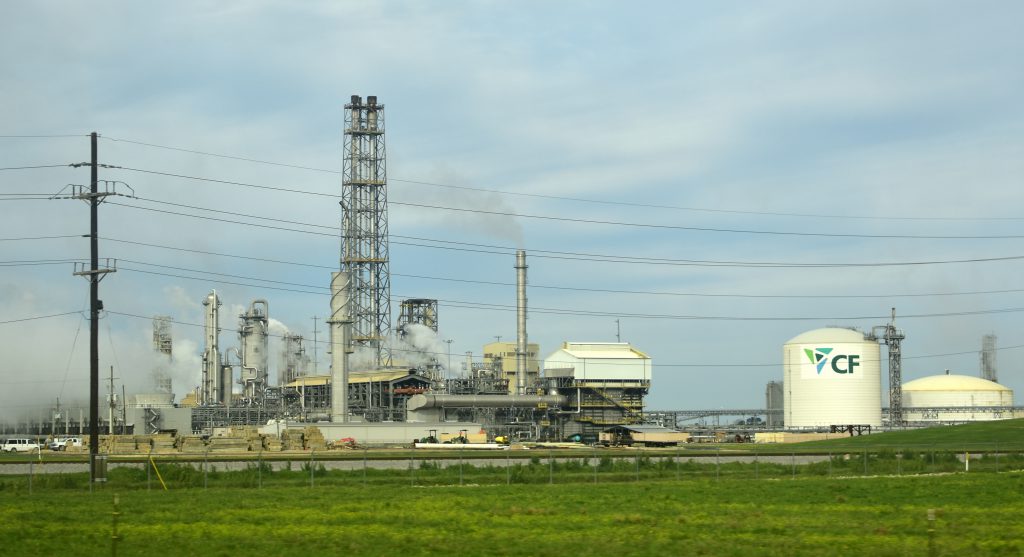
‘I think I’m far away enough’
Just 11 miles away, across the Sunshine Bridge, sits a very different fertilizer facility. CF Industries’ Donaldsonville complex sprawls across 1,400 acres and sports a large waste-burning flare that persists day and night. The plant abuts patches of farmland, a veterinary clinic and quiet neighborhoods on two sides.
Knock on the doors of residents living next to CF, and you’ll find some people aren’t bothered.
Donaldsonville resident Renee Steib has lived next to the plant for about a decade. The view from her front steps, about 600 yards from the plant’s fenceline, includes a field and fuming towers.
Steib said that she moved to the neighborhood because she likes how quiet it is, and that she doesn’t look out her front door much anyway.
In fact, the only time she has been bothered by CF was last winter. It was a December morning, and she got a call from a friend asking to see if she was all right. Steib had no idea what she meant.
An ammonia leak had forced the evacuation of a nearby school and a number of road closures.
Although CF Industries told the media that people neighboring the plant had been informed, Steib said she was not notified. But otherwise, she said, she doesn’t have a problem with the company. After all, she works at Bayer’s chemical plant in nearby St. Charles Parish. Her father and uncle worked for CF for years.
In 2013, a blast at the Donaldsonville plant killed one man. It wasn’t the first time CF was tied to a fertilizer plant explosion that year. In a separate incident in West, Texas, CF Industries supplied the West Fertilizer Company with ammonium nitrate that caused an explosion that killed at least 15 people and injured hundreds.
Steib said she wasn’t worried about such accidents at the plant impacting her.
“I think I’m far away enough,” she said.
Aside from the fact that her allergies get a little worse when the CF-owned sugar cane field in her back yard is burned, Steib said she doesn’t have any health concerns. And, she said, the smell of burning sugar cane doesn’t bother her.
“Come on, we’ve lived in Louisiana our whole lives. It’s nothing new to us. You smell it, then you just keep going,” she said.
Henry Jenkins, who lives on the other side of the plant, said he wasn’t concerned either. He said he got a text message about the ammonia release, and he doesn’t think the plant affects his health.
Jenkins, who is on dialysis due to kidney failure, moved his family to Donaldsonville about six years ago. They previously lived in a trailer in nearby Belle Rose.
“We raised our boys in a trailer, and I wanted a better environment for them,” he said.
CF did not respond to multiple requests for comment.
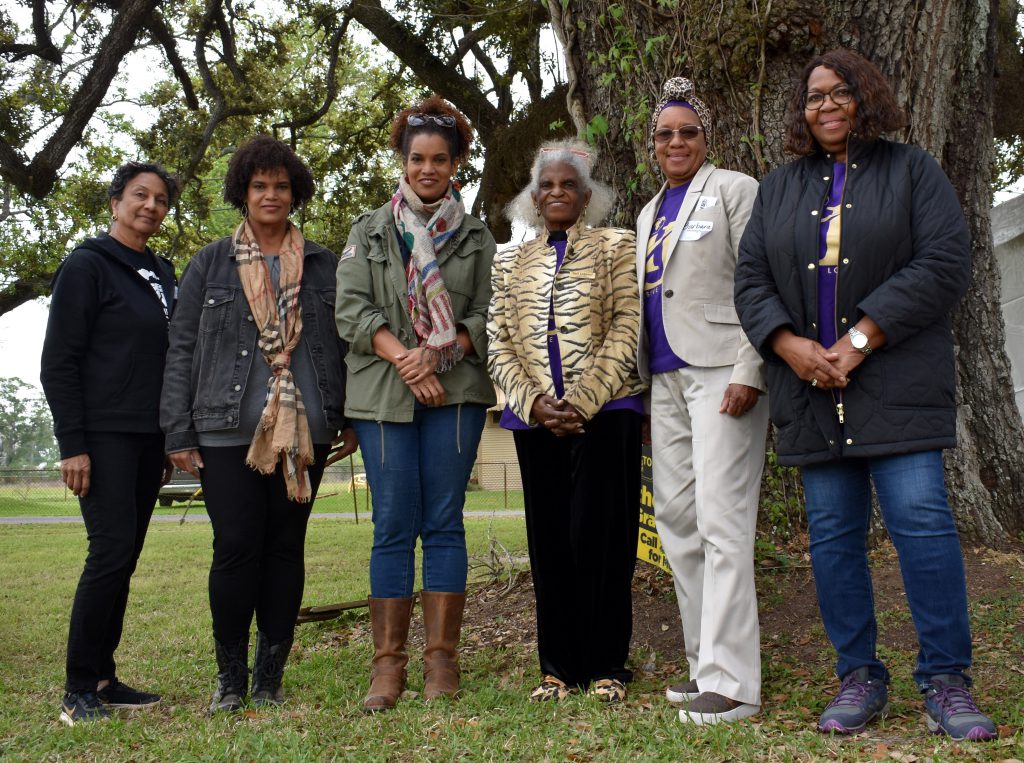
‘Something had to be wrong’
Regardless of residents’ perceived risks, EPA data show that each fertilizer facility emits chemicals that can harm human health and the environment.
The three complexes ranked in the top third of more than 15,000 facilities in the U.S. for potential health risks from on-site air emissions, according to EPA’s Risk-Screening Environmental Indicators. According to EPA’s Toxics Release Inventory, in 2021 the facilities collectively emitted millions of pounds of ammonia and nitrate compounds, as well as lesser amounts of methanol, lead compounds, formaldehyde and sulfuric acid, to air, water and other places.
Ammonia exposure can cause reduced lung function and irritation to the throat and eyes. Ammonia also contributes to the formation of fine particles in the air, called PM 2.5, that can penetrate deep in the lungs and cause ailments such as chronic obstructive pulmonary disease and lung cancer. Exposure to high levels of formaldehyde is linked to rare throat and nose cancers and also results in skin rashes and breathing difficulties.
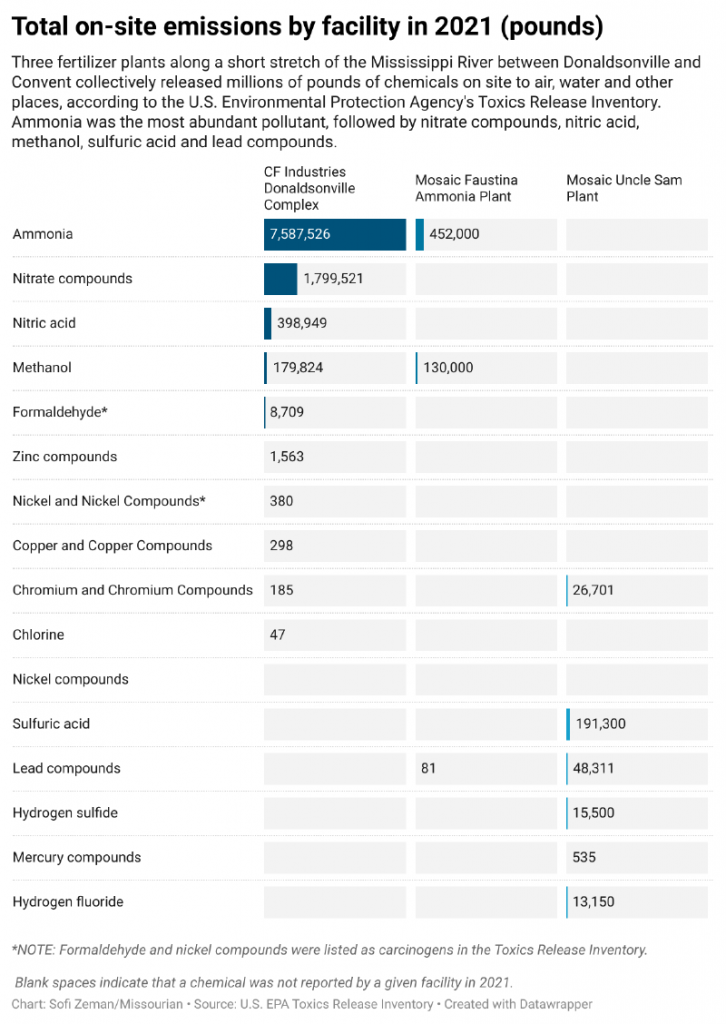
In addition, people living in the area have a higher cancer risk than at least 80% of Americans and are at a higher risk of respiratory illness than at least 95% of Americans, according to most recent data available through the EPA’s Environmental Justice Screening and Mapping tool.
Communities don’t always get the health information they need, Terrell said. Misinformation and economic interests complicate the picture. Plus, the fertilizer plants tend to fly under the radar compared to high-profile battles over proposed new facilities, such as Greenfield Louisiana LLC’s grain elevator in nearby St. John the Baptist Parish.
» Read More: Louisiana residents fight to end industrial development in their communities
On a recent spring day, a group of longtime residents-turned-environmental-activists sat under the spreading branches of a live oak tree, reflecting on their fight to protect their community.
Washington said she knows a number of people in the area who suffered from emphysema, headaches, coughs, cancer and early death. Her sister who lived nearby died at 57 from lung cancer. She attributed these health issues to the particulate matter from all the chemical production sites in the area.
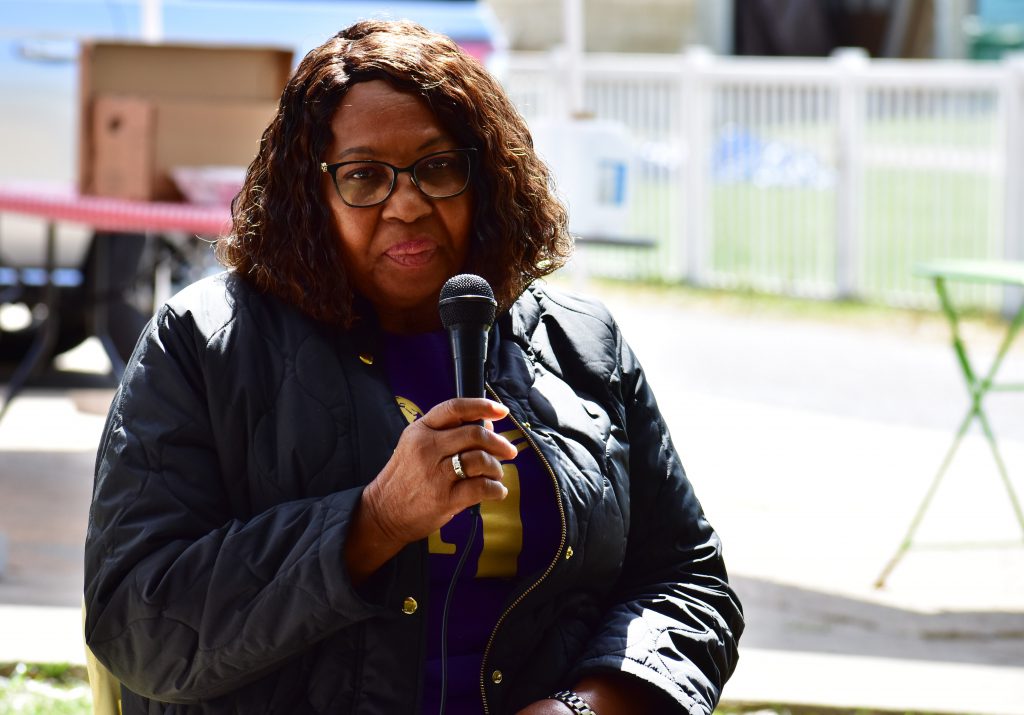
Another co-founder of Inclusive Louisiana, Myrtle Felton, said she was inspired to join the fight against industry after five of her family members died over the course of just three months in 2014.
“I knew something had to be wrong for people just to start dying like that all of a sudden,” Felton said.
Residents are left with many questions, as it’s difficult to directly trace negative health outcomes to pollution from one specific plant. However, a correlation can be drawn between cancer rates and collective emissions from local plants, according to a 2022 study from the Tulane Environmental Law Clinic.
Felton said plans for new developments are often in the works well before nearby communities are informed of new construction. And, Washington said, groups actively working to stop new companies from coming in don’t always have time to worry about combating the existing plants around them.
What activists want now is accountability for industry and regulators – and action to prevent current and future pollution.
LeBoeuf credits modern technology and science, media coverage and today’s youth for getting the word out about exposure to pollutants. She said people around her are starting to “wake up and see” the dangers. “We are not sleeping anymore,” she said.
This story is part of The Price of Plenty, a special project investigating fertilizer from the University of Florida College of Journalism and Communications and the University of Missouri School of Journalism, supported by the Pulitzer Center’s nationwide Connected Coastlines reporting initiative.
Read Next: Part III: Water & Land
 The Price of Plenty
The Price of Plenty